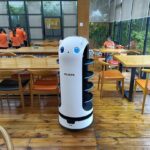The rapid advancement of artificial intelligence and automation technologies has sparked widespread discussions about the future of work and human relevance in an increasingly digital world. However, the most successful organizations are discovering that the true power lies not in replacing humans with machines, but in creating synergistic partnerships between AI and human intelligence. AI + Human Collaboration: The Role of People in Automation represents a paradigm shift from the traditional view of automation as a human replacement to a more nuanced understanding of how people and technology can work together to achieve unprecedented levels of productivity, creativity, and innovation.
Rather than viewing automation as a threat to human employment, forward-thinking businesses are recognizing that the most effective automated systems are those that leverage human strengths while allowing machines to handle repetitive, data-intensive tasks. This collaborative approach acknowledges that while AI excels at processing vast amounts of information, recognizing patterns, and executing consistent processes, humans bring irreplaceable qualities such as emotional intelligence, creative problem-solving, ethical reasoning, and the ability to navigate complex social dynamics.
The integration of AI + Human Collaboration: The Role of People in Automation is transforming industries across the board, from healthcare and finance to manufacturing and customer service. Organizations that embrace this collaborative model are not only seeing improved efficiency and reduced costs but also enhanced job satisfaction among employees who find themselves freed from mundane tasks and empowered to focus on more strategic, creative, and meaningful work.
The Evolution of Human-AI Partnerships
The relationship between humans and automated systems has evolved significantly since the early days of industrial automation. Initially, automation was primarily focused on replacing human labor in manufacturing and production environments, with machines taking over repetitive physical tasks. However, as artificial intelligence has become more sophisticated, the scope of automation has expanded into cognitive tasks, creating new opportunities for human-machine collaboration.
Modern AI systems are designed to augment human capabilities rather than simply replace them. Machine learning algorithms can process and analyze data at speeds impossible for humans, identifying trends and patterns that might otherwise go unnoticed. Meanwhile, humans provide the contextual understanding, creative insight, and ethical oversight necessary to interpret these findings and make informed decisions. This complementary relationship allows organizations to harness the computational power of AI while maintaining the human judgment essential for complex decision-making.
The evolution toward collaborative automation has also been driven by the recognition that fully automated systems, while efficient, often lack the flexibility and adaptability required in dynamic business environments. Human oversight and intervention capabilities ensure that automated processes can be adjusted, refined, and improved based on changing circumstances and emerging challenges.
Key Benefits of Human-AI Collaboration
The strategic implementation of AI + Human Collaboration: The Role of People in Automation delivers numerous advantages that neither humans nor machines could achieve independently. One of the most significant benefits is enhanced decision-making quality. While AI can process vast datasets and provide data-driven recommendations, humans bring contextual awareness, industry experience, and the ability to consider factors that may not be captured in the data. This combination results in more comprehensive and nuanced decision-making processes.
Increased efficiency and productivity represent another major advantage of human-AI partnerships. By automating routine tasks, employees can redirect their time and energy toward high-value activities that require creativity, critical thinking, and interpersonal skills. This not only improves overall organizational productivity but also leads to greater job satisfaction as workers engage in more meaningful and challenging work.
Improved Innovation and Creativity
The collaborative model also fosters innovation and creativity in ways that pure automation cannot. AI systems can generate multiple options, analyze potential outcomes, and provide comprehensive background research, while humans contribute creative vision, innovative thinking, and the ability to connect seemingly unrelated concepts. This partnership enables organizations to explore new possibilities and develop innovative solutions more effectively than either humans or AI could achieve alone.
The Evolution of Human Roles in Automated Systems
As artificial intelligence transforms industries worldwide, the concept of AI + Human Collaboration: The Role of People in Automation has become increasingly critical for organizations seeking sustainable success. Rather than replacing human workers entirely, modern automation systems are designed to augment human capabilities, creating symbiotic relationships that leverage the best of both worlds.
Strategic Oversight and Decision-Making
In today’s automated workplace, humans have evolved from task executors to strategic supervisors. Workers now focus on high-level decision-making, providing context and judgment that AI systems cannot replicate. For instance, in financial services, AI algorithms can analyze thousands of loan applications in minutes, but human experts evaluate complex cases, interpret unusual circumstances, and make nuanced decisions that require emotional intelligence and ethical considerations.
This shift exemplifies how AI + Human Collaboration: The Role of People in Automation creates more meaningful and intellectually challenging positions for workers. Healthcare professionals now use AI-powered diagnostic tools to identify patterns in medical imaging, but doctors remain essential for patient communication, treatment planning, and handling unexpected complications that require creative problem-solving.
Quality Assurance and System Monitoring
Human oversight remains crucial in ensuring AI systems operate within acceptable parameters. Quality assurance specialists monitor automated processes, identify anomalies, and intervene when systems produce unexpected results. In manufacturing, human operators work alongside robotic systems, continuously monitoring production quality and making real-time adjustments that prevent costly errors.
The importance of AI + Human Collaboration: The Role of People in Automation becomes evident in industries like autonomous vehicles, where human safety operators remain ready to take control during critical situations. These professionals combine technical expertise with split-second decision-making abilities that current AI technology cannot match.
Creative Problem-Solving and Innovation
While AI excels at processing data and following established patterns, humans continue to drive innovation through creative thinking and out-of-the-box solutions. Design teams use AI tools to generate initial concepts and iterate rapidly, but human creativity shapes the final products that resonate with users on emotional and aesthetic levels.
Interpersonal Communication and Relationship Building
The human element becomes irreplaceable in roles requiring empathy, cultural sensitivity, and complex communication. Customer service representatives now handle escalated issues that require emotional intelligence, while AI chatbots manage routine inquiries. This division of labor demonstrates how AI + Human Collaboration: The Role of People in Automation optimizes both efficiency and customer satisfaction.
Sales professionals leverage AI-powered analytics to identify prospects and predict buying patterns, but they rely on their interpersonal skills to build trust, negotiate contracts, and maintain long-term client relationships. This collaborative approach results in higher conversion rates and stronger customer loyalty than either humans or AI could achieve independently.
Skills Development and Continuous Learning
The success of AI + Human Collaboration: The Role of People in Automation depends heavily on workforce adaptability and continuous skill development. Organizations must invest in retraining programs that help employees transition from routine tasks to more strategic, creative, and interpersonal roles. This includes developing technical literacy to work effectively with AI systems, as well as strengthening uniquely human skills like critical thinking, emotional intelligence, and complex problem-solving.
Forward-thinking companies are creating learning ecosystems where employees can regularly update their skills to stay relevant in an AI-augmented workplace. These programs focus on areas where humans excel: ethical reasoning, cultural competency, and the ability to navigate ambiguous situations that require contextual understanding.
Ethical Oversight and Governance
As AI systems become more sophisticated, human involvement in ethical oversight becomes paramount. Workers are increasingly responsible for ensuring automated systems operate fairly, transparently, and in accordance with regulatory requirements. This includes monitoring for algorithmic bias, protecting privacy rights, and maintaining accountability in automated decision-making processes.
The integration of AI + Human Collaboration: The Role of People in Automation requires humans to serve as ethical guardians, ensuring that technological advancement aligns with societal values and organizational principles. This responsibility cannot be delegated to machines, as it requires moral reasoning and cultural sensitivity that only humans possess.
Conclusion: Embracing the Collaborative Future
The future of work lies not in the competition between humans and machines, but in their seamless collaboration. AI + Human Collaboration: The Role of People in Automation represents a fundamental shift toward more strategic, creative, and fulfilling work experiences. Organizations that successfully implement this collaborative model will benefit from increased efficiency, innovation, and employee satisfaction.
Rather than fearing automation, workers and employers should embrace the opportunities it creates for human enhancement and professional growth. The most successful automated systems will always require human insight, creativity, and emotional intelligence to reach their full potential.
Take Action Today
To thrive in this evolving landscape, start by identifying areas within your organization where human expertise can complement automated processes. Invest in training programs that develop both technical competencies and uniquely human skills. Most importantly, foster a culture that views automation as a tool for human empowerment rather than replacement.
The organizations that master this balance will not only survive the age of automation but will lead their industries into a more innovative and human-centered future.
![$input.first().json.photos[2].photographer_url](https://images.unsplash.com/photo-1580806280548-12e7870ad775?crop=entropy&cs=tinysrgb&fit=max&fm=jpg&ixid=M3w4MDk5MjJ8MHwxfHNlYXJjaHwzfHxBSSUyMCUyQiUyMEh1bWFufGVufDB8fHx8MTc2MDQ0NTgxMXww&ixlib=rb-4.1.0&q=80&w=1080)



